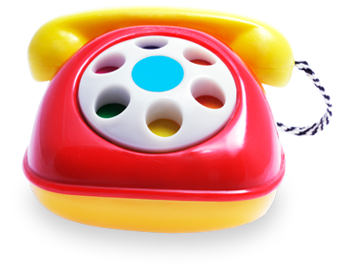What Is a Motility Disorder?
Motility disorders occur in the upper and lower sections of the digestive tract. They include:
- Achalasia: Occurs when the esophagus cannot move correctly, leading to food backing up into the esophagus. This causes swallowing difficulties and vomiting.
- Gastroparesis: A delay of food moving from the stomach into the intestines. This can cause severe nausea, vomiting, abdominal pain, and weight loss.
- Pseudo-Obstruction: Can be caused by slow movement of the small intestines, leading to abdominal distention and difficulties with eating.
- Chronic Constipation: When a child's inability to have regular bowel movements is severe, blocks can form and can cause them to leak stool.
Our team of doctors is actively collecting data, especially about lower digestive-tract conditions such as chronic constipation, to share with other experts and improve available treatments.
How We Diagnose Motility Disorders
Our pediatric motility specialists use a variety of tests to diagnose the cause of your child’s pain and discomfort and to create the best treatment plan for your child. Our motility team will talk with you and your child to take a very careful medical history. Your child’s doctor will determine which tests are needed, based on whether the problem is an upper- or lower-gastrointestinal issue. Lab tests, such as blood work, and X-rays are often prescribed. Other outpatient tests may include:
Manometry
Studies how muscles contract and whether the squeezing action is strong or weak. This helps us determine how the gastrointestinal tract moves food and stool. Manometry can be used to test movement in the esophagus, small intestines, colon, and anus. Studies that look at the small intestine and colon may require an overnight hospital stay.
Upper GI X-Ray
Pictures of the esophagus and stomach are taken as your child swallows food or drink that has a contrast substance in it to make it stand out visually.
Gastric Emptying Study
Monitors how food travels out of the stomach. A child swallows food or drink that has contrast material in it. Doctors record and watch the material as it travels out of the stomach.
Upper Endoscopy
The doctor uses a thin, lighted tube with a camera to look inside the esophagus, stomach, and small intestine for damaged tissue. The tube is inserted through the mouth and down the throat. This can also be used to place other tubes needed for esophageal and small intestine manometry studies.
Colonoscopy
The doctor uses thin, lighted tubes to check the linings of the intestines and colon. This can also be used to place other tubes needed for colonic manometry studies.
Family and Support Services
When you bring your child to Duke Children’s, you may feel overwhelmed and have a lot of questions. Our team is here to help. Our doctors and nurses connect your child and you to many supportive services designed to make the experience more comfortable.
Our child life specialists provide support, education, and guidance to help you and your child during testing, treatment, and hospitalization. Child life specialists explain procedures, offer encouragement, and use fun activities to take your child’s mind off treatment.
Care Coordination and Support
Our social workers can help you navigate the medical system and coordinate the variety of health services your child needs. We help you work with insurance providers, connect with resources, and manage details related to your child’s care.
If your child is staying at Duke Children’s, you can relax in the Ronald McDonald Family Room. You can grab a light meal, shower, do laundry, or use a computer with internet access.

